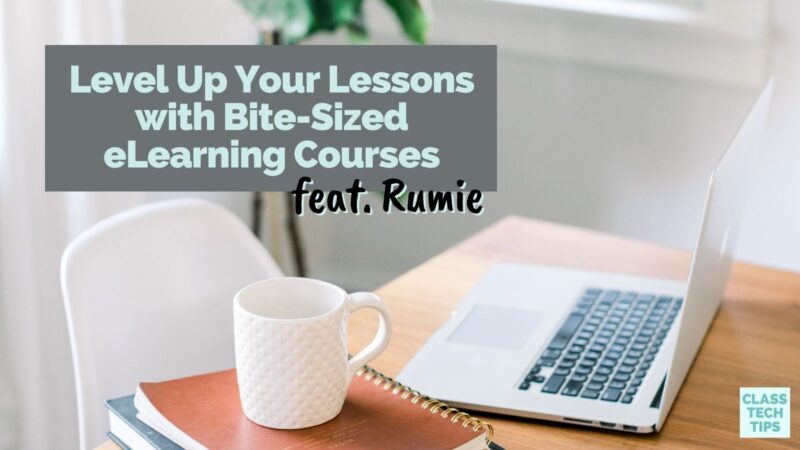Are you interested in using video content in your blended or flipped classroom? The bite-sized eLearning courses from Rumie can help you access engaging content to share with students. You can share social media-style content in your classroom to go beyond a traditional classroom experience. This platform can save you time as you create and explore digital learning opportunities for any subject area. It can help cut down time spent searching for supplemental resources, and reach students with multimedia content.
Earlier this year, I told you about a free micro-learning library called Rumie. If you haven’t heard of it before, Rumie hosts bite-sized learning opportunities that help students explore a new topic or review content from a course. Rumie’s latest release has made it even easier to integrate educational technology into your lessons. And now they have a free guide for educators to make lesson creation even easier.
Today’s blog post will share some of the benefits of using bite-sized e-learning courses with students.
4 Reasons to Try Bite-sized eLearning Courses
Regular readers of the blog might remember this post that unpacked the term microlearning and introduced Rumie. Microlearning is where we learn in smaller units or smaller chunks of time — some as short as six minutes — than we usually experience in a course or classroom. The short pieces of content in a bite-sized learning course tends to present information in a more concise format. When students take a bite-sized course, the content from one course can build upon another. With this strategy, the content is consumed in a specific sequence to build towards a deeper understanding of a larger topic.

The team at Rumie calls these short e-learning courses “Bytes” since they are bite-sized ways to interact with a topic. So let’s dive into four reasons to try bite-sized eLearning courses this school year.
Using Bytes in Blended Learning
There is a combination of online and offline learning experiences in a blended learning classroom and often a combination of asynchronous and synchronous activities, too. If you are looking to foster a blended learning approach, you can introduce Bytes in a few different ways. For example, you might have students interact with a Byte as they move through a blended learning station rotation or incorporate Bytes into checkpoints when students are working through content at their own pace.
Designing Engaging Learning Experiences
I’m certainly guilty of saying, “I learned this on TikTok” or “I saw this on TikTok” when sharing a new recipe idea or story with a friend or family member. Video is an engaging medium for all ages. The bite-sized content from Rumie can add an element of social media to your classroom while staying off of social media platforms. When you create your own Byte, you can pique student interest in a topic using GIFs, videos and a quick assessment.

Try Out a Flipped Classroom
This summer, I shared an interview on my podcast with Mandy Rice, who is a big proponent of the flipped classroom model. One of her pieces of advice is to start small and try flipping just one of your courses or classes. If you’d like to try out a flipped classroom this year, I recommend looking at Bytes from Rumie. You can share short learning courses for students to consume before class and focus class time on discussion.
Save Time with Bite-Sized Content
You can use Bytes this school year to cut down on lesson planning time. There are many ready-to-use bytes, and you can replicate the format if you want to cover a particular topic. I love that there are so many examples on their site. Right now, the team at Rumie has created a guide to help you save time this school year. You can use this link to download the free Rumie lesson guide now!
Ready to get started using bite-sized eLearning courses this school year? Head over to Rumie’s website and check out their free lesson guide with even more ideas. And follow along on TikTok for more fun tips from Rumie, too.







